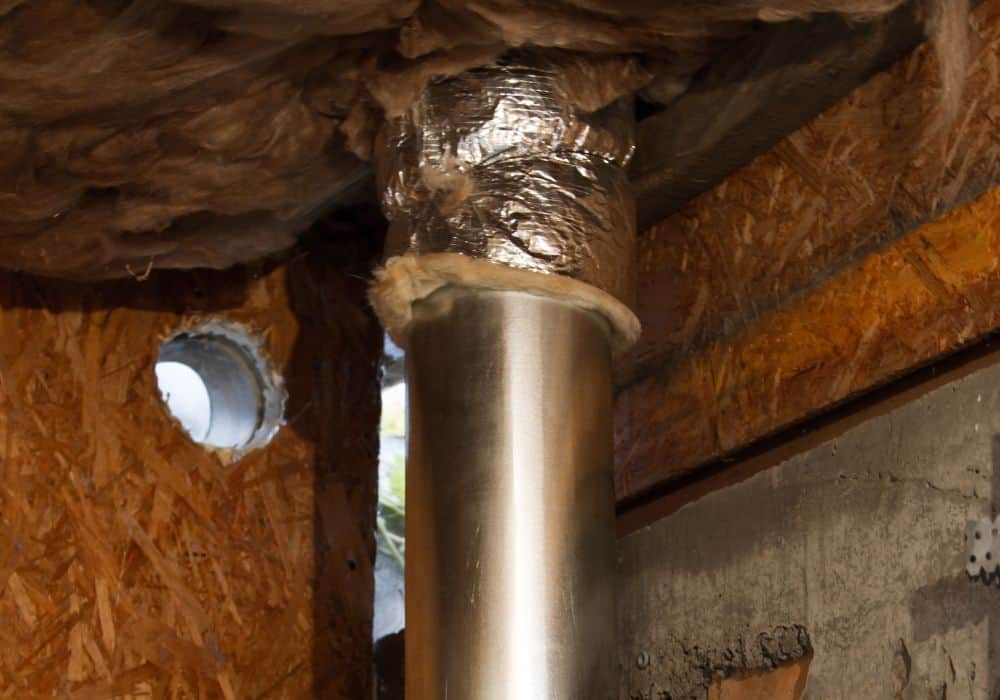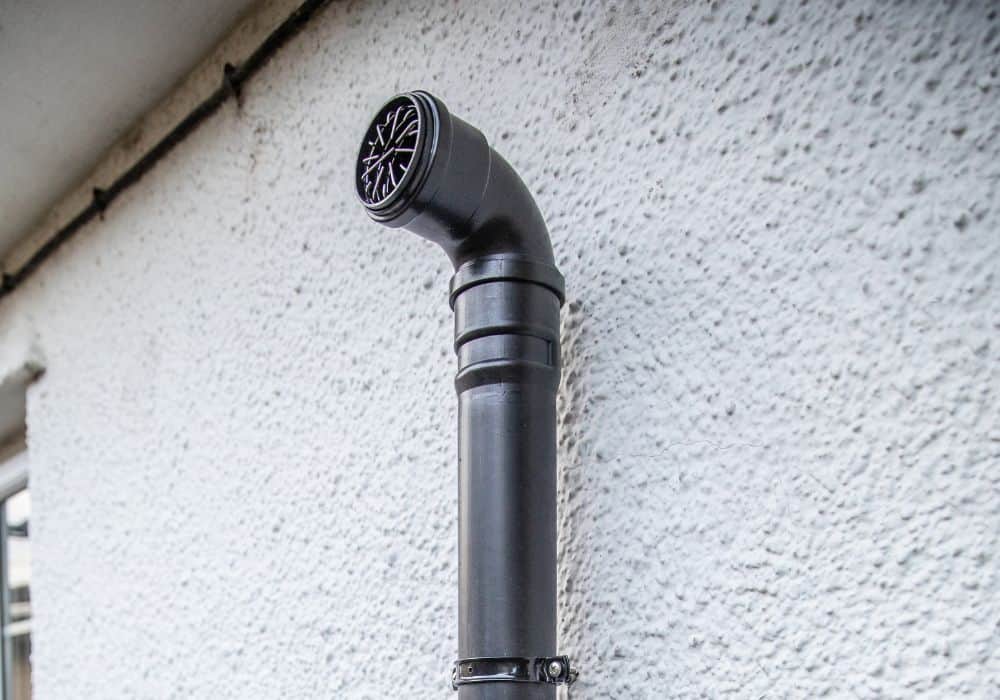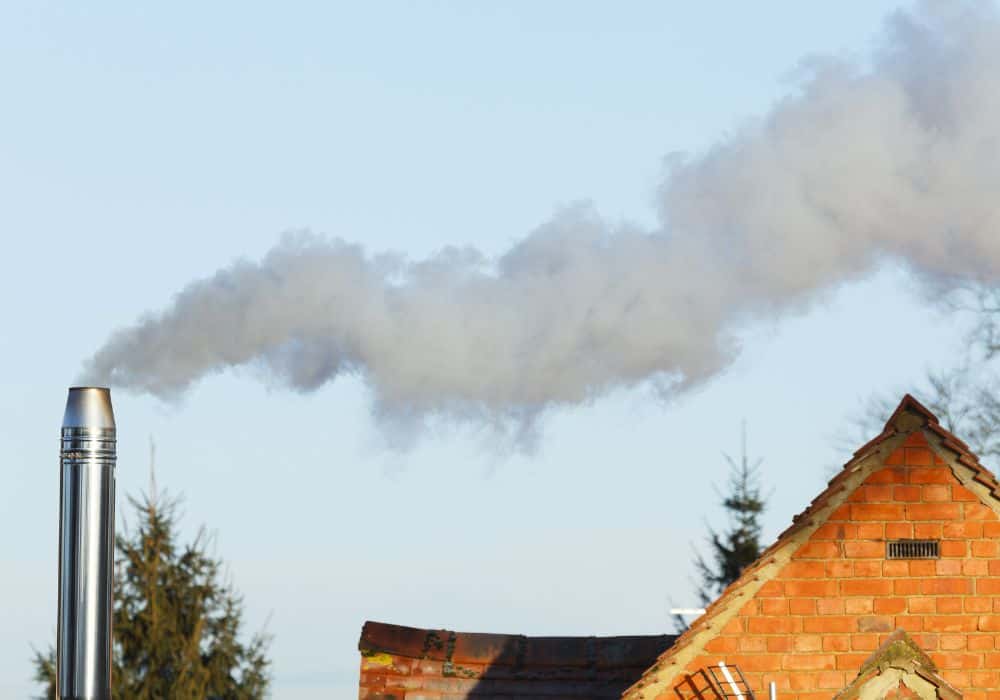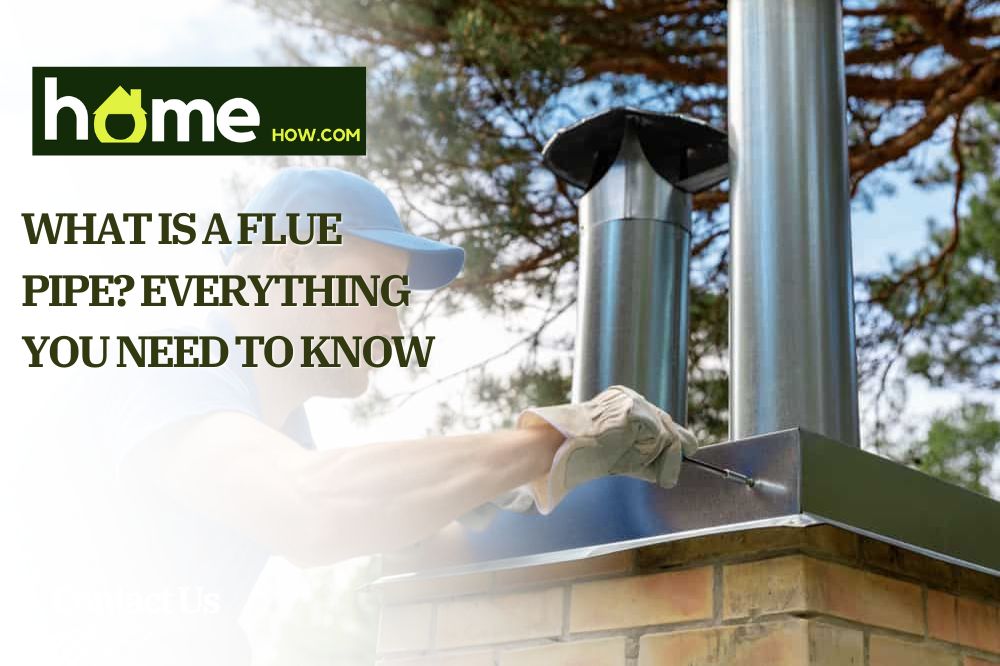Ever wondered what those long metal pipes that stretch out of chimneys are called? Well, those are flue pipes.
Also known as a chimney or stove pipe, the flue pipe is a hollow metal tube that transports smoke from a stove or fireplace to an outside opening. It transports the gas produced by combustion in the firebox, taking undesirable gasses and particles out.
Here, we discuss all you need to know about flue pipe systems, how to properly install them and how these systems are necessary for improving the quality of indoor air.
Components that Make Up the Flue Pipe System
Before proceeding to what components make up the flue pipes in your home to keep harmful byproducts out, you should become acquainted with its components and tools. The following are the most important components of any flue pipe system:
1. The Chimney
This is a vertical space that either opens onto an outside venting stack or ends at an outside wall. It is the basic component of any system.
2. The Base
It is typically made of concrete or alternative material, such as clay tile or steel-reinforced concrete, and it supports the weight of the chimney walls and roofing materials above it.
3. Chimney Liners
Also called flue pipes, they are designed to withstand the high temperatures produced by wood burning and to provide a smooth nest surface for the passage of exhaust gasses and smoke.
4. Chimney Walls
These are vertically stacked layers of fireproofing material that helps to reinforce the chimney system while also preventing fire outbreaks.
5. The Top Cap

This is used to cover the top opening of the chimney system after all the flue pipework has been completed. It allows for free passage of smoke up the chimney.
6. Flame Deflector
This device creates an air gap between adjacent flames, allowing for an uninterrupted flow of air from one burner channel to the next, to prevent sparks from igniting nearby items like furniture or curtains.
7. Chimney Starter
A chimney starter ignites wood fires quickly and safely. This is accomplished by placing a small amount of paper in the firebox and lighting it with a match or lighter.
Tools and Materials Needed for Flue Pipes Installation
The following materials are required when planning to install a flue pipe in your home:
- Flue pipe
- Vent supports
- Jigsaw
- Sheet metal screws
- Fireproof sealant (such as fiberglass rope)
How to Install a Flue Pipe?
Now that you’ve identified all the components and tools required for a flue system installation, follow these steps to get the job done:
Step 1
Purchase the flue pipe you intend to use. Get double- or triple-wall pipe for a wood stove or any home use. It has a sufficient number of flue pipes to tower over all other roof vents and pipes.
Step 2

Locate the center of the ceiling where the chimney pipe will go into. Make sure the single-wall chimney pipe is at least 18 inches away from combustibles. Once you’ve identified the center, mark the ceiling with the ceiling support box where you want to cut.
Step 3
Install a vertical pipe between the ceiling and the roof. Cut a framing hole at least 10 inches in diameter using a jigsaw, and then install an insulation shield to keep the space around the pipe clear.
Step 4
If the pipe is being routed through a chimney stack, no more than two 45-degree elbow pipes should be installed; however, if the pipe is longer than 25 feet, the vent support straps can be spaced every 8 feet along its length.
Step 5
Now connect the pipe sections with three sheet metal screws and overlap the seams by at least 2 inches. Install a flue collar with a fire-resistant sealant where the pipe meets the stove. Secure a chimney pot or flue cap stopper at the top of the pipe to keep the rain out.
5 Reasons Why Flue Pipes are Important
A flue pipe system is required for any house fireplace, as they transfer dangerous byproducts and hot air from the inside of your house to the outside atmosphere. There are also several advantages to using a flue system, which is listed below:
1. They Improve the Quality of Indoor Air
Toxic gasses and particles are frequently released into the home through the heating system, which is nearly impossible to remove by simply repointing or cleaning the chimney.
An alternative method is to use a flue pipe system, which uses the convection principle (transferring heat by moving air) to prevent toxic materials from accumulating inside homes. It removes smoke and other emissions from buildings, thus improving the indoor environment.
2. They Aid in Preventing Carbon Monoxide Poisoning
Carbon monoxide, a poisonous gas that can be fatal if inhaled without adequate ventilation, is present in combustion gasses that enter your home. Flue pipes will help prevent carbon monoxide from penetrating the walls of your home if there are no openings in the walls.
3. They Provide Immense Health Benefits

Smoke, soot, and flue gasses are extremely dangerous and can cause a variety of health problems if inhaled. The flue system, which ensures that these substances are expelled outside, contributes to the safety of homeowners who use fuel for home heating.
4. They Prevent Fuel Leakages
When you choose an efficient furnace or a chimneyless flue system, you eliminate all dangerous gasses from your home. Furthermore, a well-designed fireplace or stove with a sturdy flue and well-built brickwork and joints will safeguard against fuel leakage.
5. They Improve Fireplace Efficiency
A good flue pipe system helps to increase the efficiency of your fireplace and stove. This is because flue pipes assist in creating a tight seal at the top of your chimney, which seals all emissions outside your home. They also keep smoke and heat from being re-circulated inside the chimney.
3 Alternative Uses of Flue Pipe
Apart from being used to send unwanted gasses through the chimney, flue pipes serve several additional alternative purposes. Here are three which are quite popular.
1. Boilers
Flue boilers are used to heat homes. They are installed in the same manner as a stove or kitchen oven but transport the steam and hot air away from the central heating system. A flue boiler in your home can also help you save up to 50% on your annual fuel costs.
2. Air Ducts
Air ducts are used for heating, ventilation, air conditioning, and air distribution. They are used as an air conduit in a building with flue pipes to help move air so that fresh air flows in and stale or polluted air flows out.
3. Plumbing
These flues are designed to ensure adequate heat transfer and prevent internal condensation in a variety of industrial operations. They have long, conical, or round cross-sections, and have been developed for use in food processing and pharmaceutical manufacturing.
How To Clean a Flue Pipe System?
The best way to clean a flue pipe when doing it yourself is by using a wire brush or stainless steel brush. These brushes can be used to remove corrosion, soot, and creosote that has accumulated on the interior of the chimney since it was last cleaned.
While doing so, try not to introduce any moisture into the system, as this can cause damage and expand existing cracks. The steps for cleaning your flue pipe are outlined below.
Step 1
Begin by gathering all the materials that you need. These include a metal brush, a masonry bit, masking tape, and a utility knife.
Step 2
Attach the metal brush to your drill and run it at full speed to remove soot, dirt, and creosote deposits from the interior walls of the flue pipe. Also, wrap the utility knife in masking tape so that no moisture comes into contact with the surfaces inside the chimney.
Step 3
Remove any gas burners or other attachments from your chimney, such as decorative items or flues for oil heaters. Next, lower the metal brush inside the flue pipe and go over it to remove debris.
Step 4
Now that the debris is clear, use a masonry bit in your drill to remove any loose soot or creosote from your chimney’s interior walls. To accomplish this, rotate the bit on its axis while scraping buildup from multiple areas at once.
Step 5
After cleaning your chimney with a drill and masonry bit, start working on any omitted areas during your initial application of these tools. Use a brush or a utility knife to remove any hard deposits and rust that may have been left behind.
Step 6
Once you are satisfied with the results and have removed all loose material, you can assemble your flue pipe and test it to ensure that everything is working properly.
Final Thoughts
The primary function of the flue pipe system is to provide adequate ventilation. If your home or building’s walls have no openings, installing flue pipes will help prevent carbon monoxide from entering through the wall, increasing the efficiency of wood stoves.
